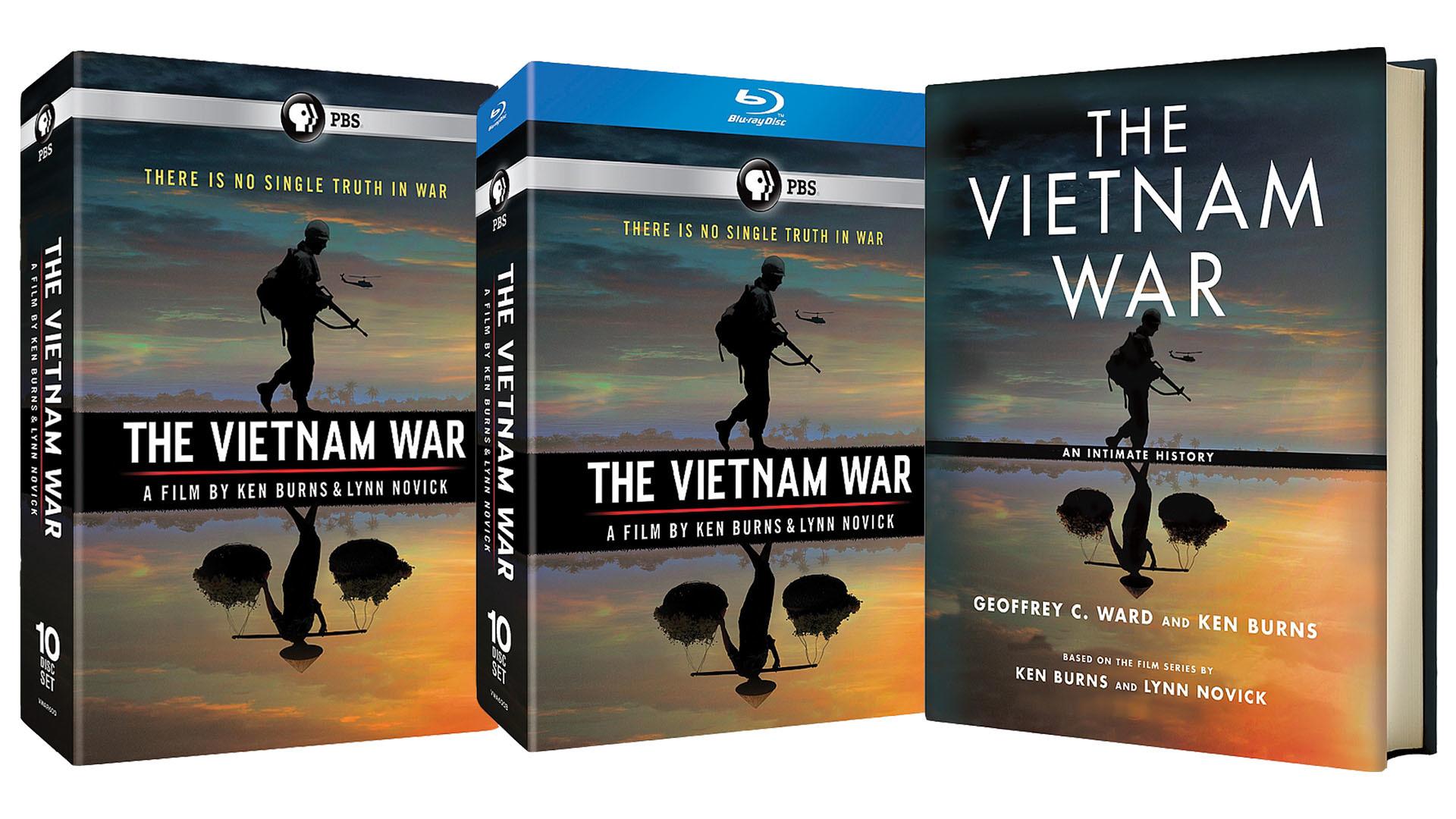
Of course he did. And a look at the film’s funders helps to explain why.
[April 30 marks the 50th anniversary of the end of the Vietnam War. To commemorate that anniversary, CovertAction Magazine has developed a series of articles that can help younger generations understand the war’s horrors and nobility of those who tried to stop it. This article specifically focuses on how corporate interests and the U.S. government, with the collaboration of leading intellectuals and film-makers like Ken Burns, has worked to distort public memory of the war and demonize the antiwar movement so that such a movement will not reemerge.—Editors]
In the fall of 2017, more than 60 million people tuned into PBS to watch Ken Burns and Lynn Novick’s documentary on the Vietnam War, which was ten years in the making and cost $30 million to produce. Assisted by 24 advisers, Burns and Novick reviewed 25,000 photographs, and featured close to 80 interviews of Americans and Vietnamese.
The film was accompanied by a book written by Burns and historian Geoffrey Ward and received praise in mainstream newspapers and among some academics.
The New York Times wrote that “half a century after the height of the conflict seem[ed] like an ideal moment for another look: long enough for most of the toxic political dust to have settled (and new historical sources to have emerged), but not so long that everyone who lived through it is dead.”[1]
Burns said that, in selecting the interviews, he did not want to feature polarizing figures, but rather to help give the audience a “ground-up view of the war from the mostly ordinary people who lived through it: American veterans [including former POWs], Gold Star mothers, diplomats, intelligence officers, anti-war activists, journalists, Vietcong fighters, North and South Vietnamese army regulars, even a (woman) truck driver from the Ho Chi Minh Trail.”
Part of the aim of the film, Burns suggested, was to try to get past the radioactive political atmosphere that the war had helped to engender, and to approach the subject in an “even-handed way.” “That’s a way of telling people ‘You can re-sheath your knives,’” he said.

In practice, Burns’s attempt at even-handedness falls short of the mark: He a) recycles the trope of the domino theory that has been widely debunked; b) omits important scheming by the CIA in the 1950s and early 1960s that was exposed in the Pentagon Papers; c) underplays the human cost for Vietnamese civilians of U.S. bombing and military operations; and d) denigrates the anti-war movement in the U.S., which is falsely depicted as having disparaged war veterans.
The film’s most deceptive aspect is its phony counter-culture veneer. Many of the episodes feature the anti-war anthems of the 1960s as a backdrop, and the film is narrated by Peter Coyote, a founder of the Haight-Ashbury Diggers who provides the voice-over at the Woody Guthrie Museum in Tulsa, Oklahoma, and for a film on legendary peace activist S. Brian Willson, among many others.[2]
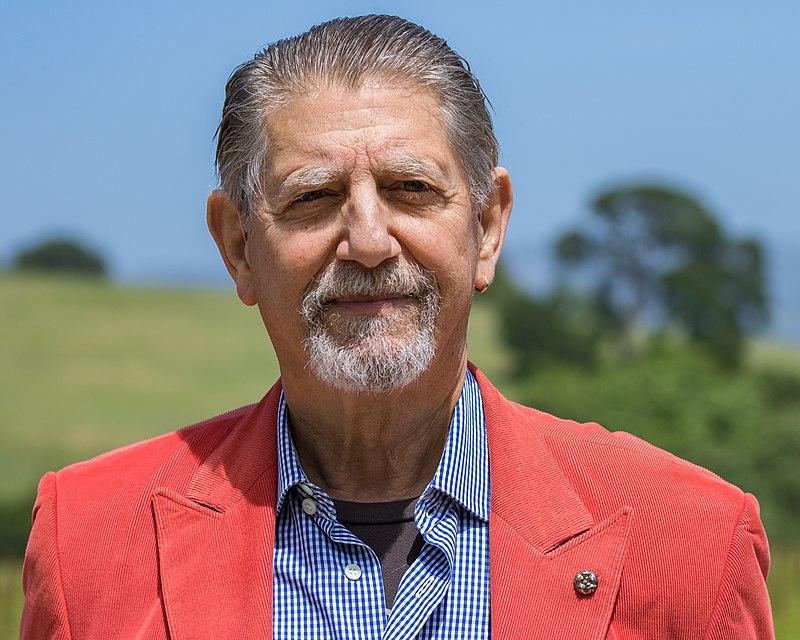
Burns and Novick’s film functions in essence as a “limited hangout” whose central purpose is damage control and discrediting of the 1960s-era anti-war and New Left movement so it will not be revitalized.
A look at the film’s financial backers makes clear the agenda underlying it.
Burns says that he deliberately sought financial support from “across the spectrum,” with sponsors including the Ford Foundation, the Rockefeller Brothers Fund and David H. Koch.[3]
The Ford and Rockefeller Brothers Funds are the philanthropic arm of the financial and political elite in the U.S., have deep CIA connections, and were headed by key early supporters and architects of the war (i.e., McGeorge Bundy and Dean Rusk).[4]
The Koch family is connected to the Republican ruling establishment and oil industry, which profited massively from the Vietnam War and has a pedigree in the John Birch Society, a radical anti-communist organization that accused Dwight Eisenhower of being a Communist agent.

Whitewashing the History of the CIA
For the sake of brevity, and because this article is appearing in a magazine devoted to exposing the CIA, the focus will be on Burns-Novick’s whitewashing of the role played by the CIA in escalating the Vietnam War.

In the first episode, Burns and Novick mislead viewers by presenting footage of North Vietnamese migrating to the South in the mid-1950s fleeing communist terror and interviewing a woman whose family fled because they faced persecution by the communists.
These migrations took place but what Burns and Novick leave out is that, as was revealed by the Pentagon Papers, the population in the north was encouraged and provoked by the CIA, which worked to sabotage North Vietnam’s economy, created a fake resistance movement and coerced many Catholics and others to flee by spreading false rumors about Vietminh atrocities and promising them the modern-day equivalent of “40 acres and a mule.”[5]
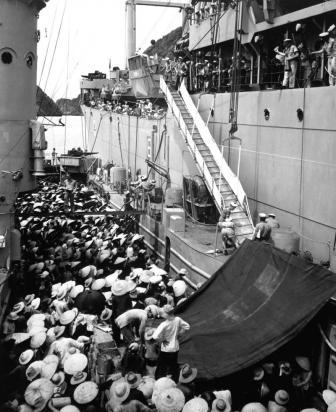
The CIA was instrumental in helping to install and sustain the U.S. client regime of Ngo Dinh Diem in South Vietnam, which blocked reunification of Vietnam laid out under the terms of the 1954 Geneva Accords and whose repressive policies triggered the growth of the National Liberation Front (NLF or Vietcong), after Diem won a rigged referendum.[6]
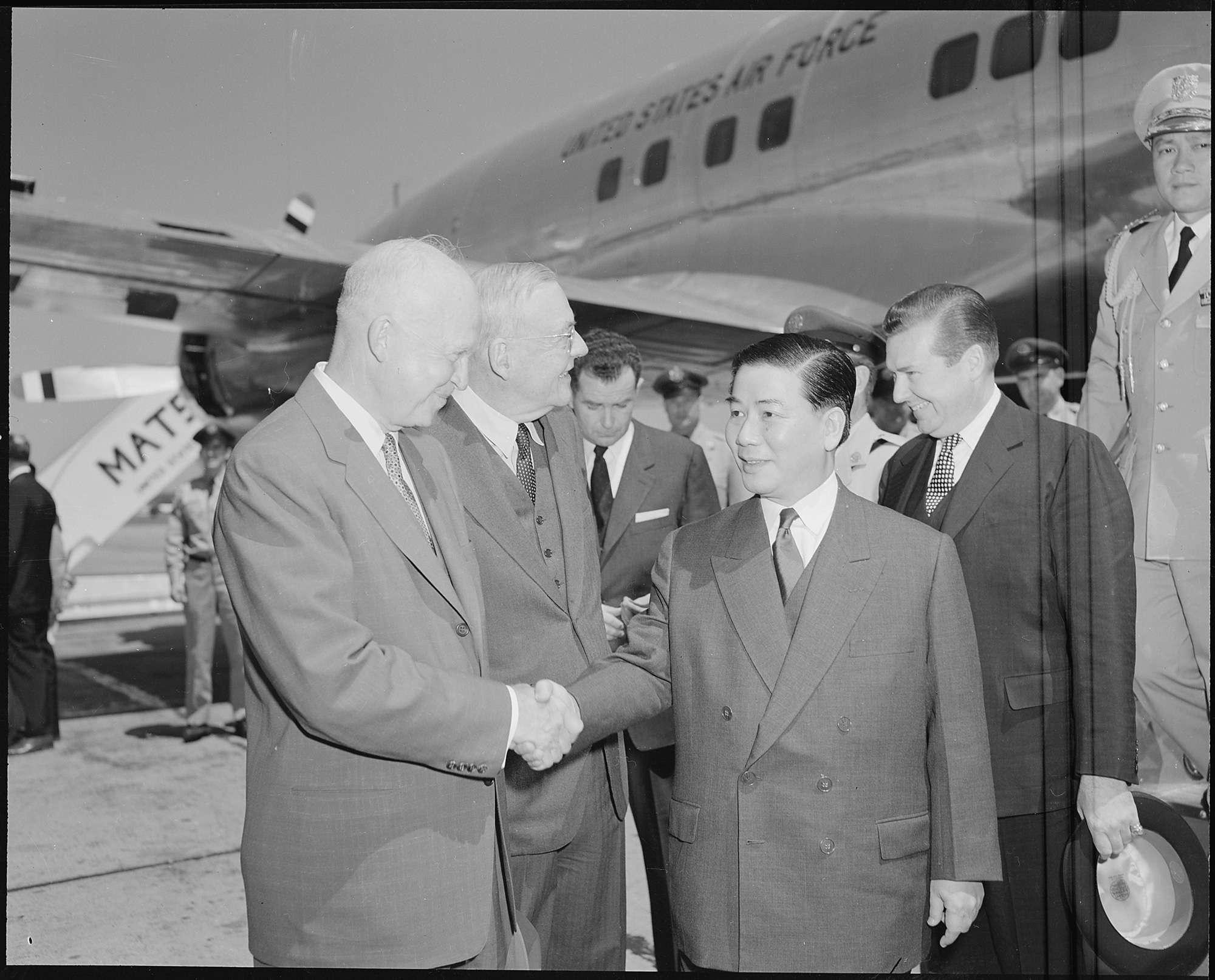
Wesley R. Fishel, a Michigan State University (MSU) professor who did contract work for the CIA, was a key liaison between Diem and the American Friends of Vietnam (AFV), a CIA-funded organization that lobbied for more military aid to South Vietnam under Diem and promoted propaganda about Diem in U.S. newspapers and magazines.
Fishel became a close adviser to Diem and headed a group of MSU professors, operating under CIA cover, who provided equipment and training to Diem’s police forces and set up a program to train his civil service.[7]
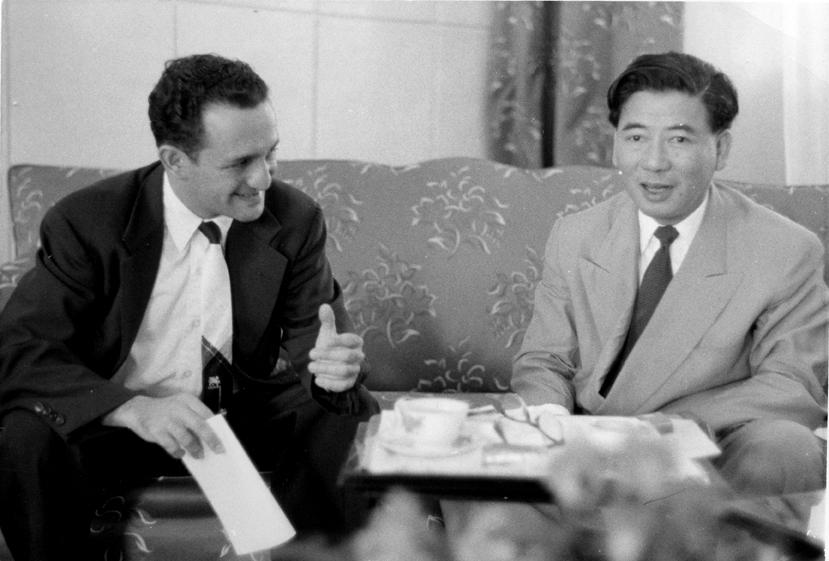
Another key figure in the CIA’s operations in Vietnam in the 1950s and 1960s was Edward Lansdale, a CIA agent operating under U.S. Air Force cover who had helped engineer U.S. counterinsurgency operations to destroy the left-wing Hukbalahap movement in the Philippines and served as a close adviser to Filipino anti-communist leader Ramon Magsaysay. Lansdale forged a similarly close relationship to Diem as he did with Magsaysay.
According to CIA expert David W. Conde, Lansdale “spent uncounted millions of dollars organizing Diem’s regime, his police, concentration camps, and arranging for the elimination of his rivals.”[8]
The latter was through the CIA-run anti-communist denunciation campaign, in which thousands of communists were converted to Diemism and forced to curse North Vietnam’s communist leader Ho Chi Minh and trample on the North Vietnamese flag. Those who did not comply were rounded up and taken to prison camps; some were tortured in a chamber run by Diem’s brother, Ngo Dinh Nhu, beneath the Saigon Zoo.[9]
In the Philippines, Lansdale was known for gruesome counterinsurgency methods designed to instill terror in the local population; these were replicated in Vietnam. In the vampire trick, for example, Lansdale instructed government troops to kidnap a guerrilla, kill him, drain his body of blood and then hang him up in a village on a hook for purposes of intimidation.[10]
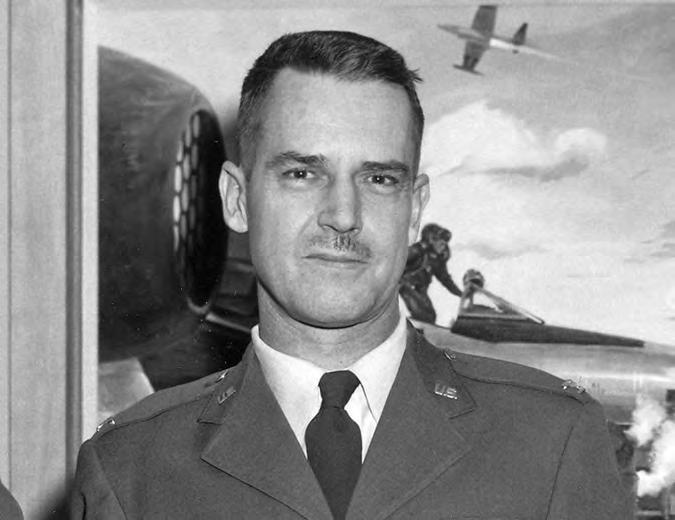
The Burns-Novick film features a photo of Diem sitting with Fishel and Lansdale around a table outside but never identifies either Fishel or Lansdale or discusses their importance.
This is part of the whitewashing of the CIA’s role in creating the disaster in Vietnam. Diem was largely a CIA creation; John F. Kennedy called him “our offspring,” and it was his oppressive policies that triggered the growth of the NLF whom the U.S. sent advisers and then combat troops to try to suppress.
Burns and Novick interview CIA agent Rufus Phillips, Lansdale’s top deputy. Phillips does not discuss the programs he and Lansdale ran; rather he continued the CIA tradition of promoting disinformation,[11] claiming that Diem was “wildly popular because he seemed to embody the nationalist cause in the South. He succeeded in getting the French out of Vietnam all the way. And Ho Chi Minh had only gotten them out of the northern half.”
These comments are a distortion of history as Diem a) was not popular among South Vietnam’s majority Buddhist population, having favored Catholics, was seen as aloof from the masses concerns and ruled through violence and terror; b) was widely viewed in South Vietnam as an American puppet and was chastised by UN Secretary-General U Thant for presiding over one of the most corrupt regimes in the world; c) had sat out much of the anti-French war at the Maryknoll Seminary in New Jersey, cultivating support from American politicians, while Ho Chi Minh had led the liberation struggle against France and at Dien Bien Phu and hence emerged as a Vietnamese national hero; and d) blocked Vietnam’s reunification—supported by the majority of its population—by refusing, with American support, to allow elections in 1956 that Dwight Eisenhower acknowledged Ho Chi Minh would have handily won.[12]
One of Diem’s top advisers, Tran Van Do, tellingly told The Asia Foundation’s director that Diem “behaved as a conqueror in South Vietnam” and showed favoritism toward Central Vietnam and the Catholic population, which spread popular disaffection with his rule.
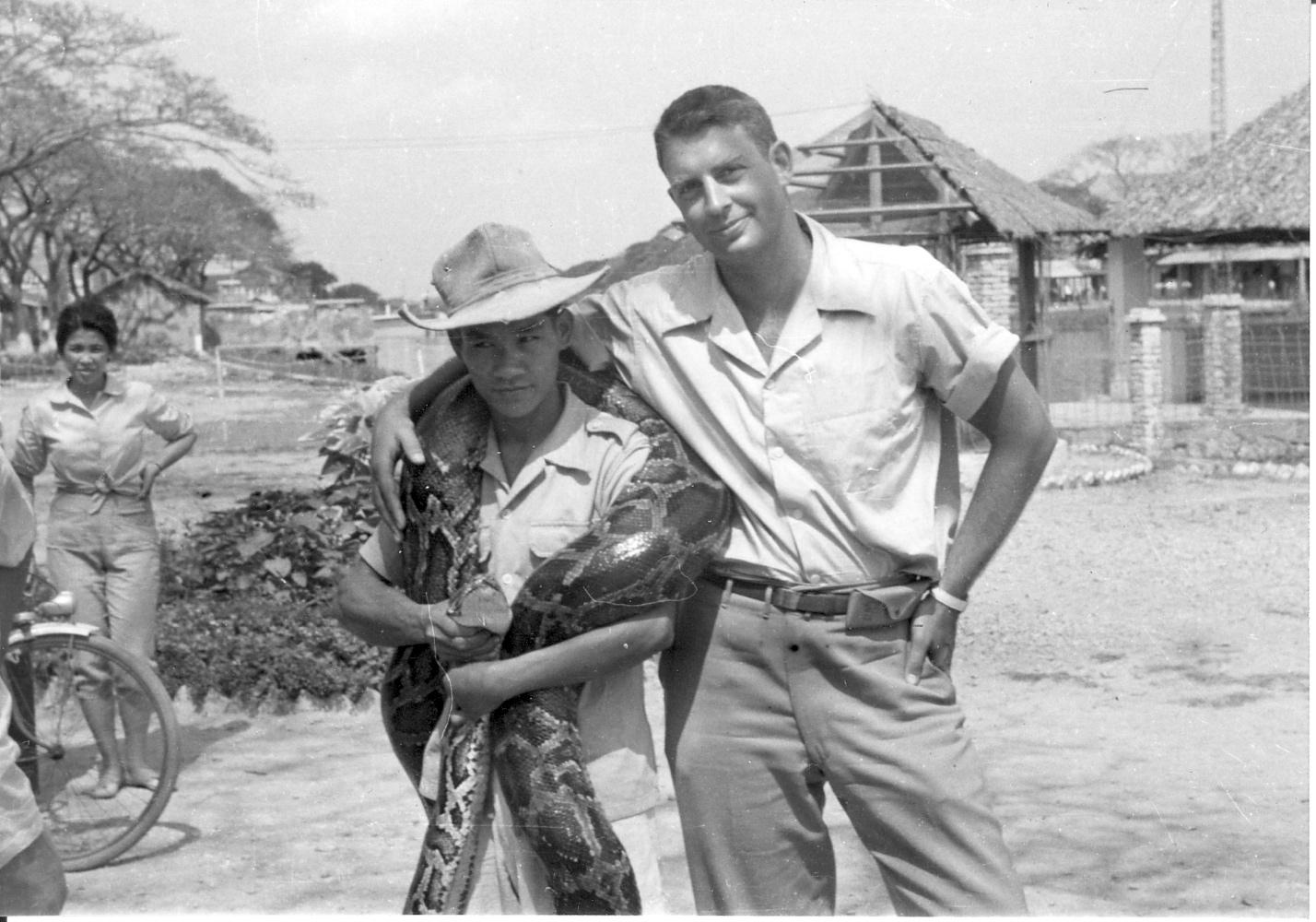
Besides Phillips, a key CIA figure in promoting public disinformation about Vietnam in the 1950s was Tom Dooley, a medical doctor from St. Louis who wrote propaganda tracts in Reader’s Digest that demonized the Vietminh and made them seem devilish while valorizing U.S. allies and the anti-communist cause.
Predictably left out of the Burns-Novick film, Dooley ran civic action programs whereby the U.S. would set up medical clinics and offer vaccines with the underlying goal of using the clinics to spy on the population and cultivate alliances.[13]
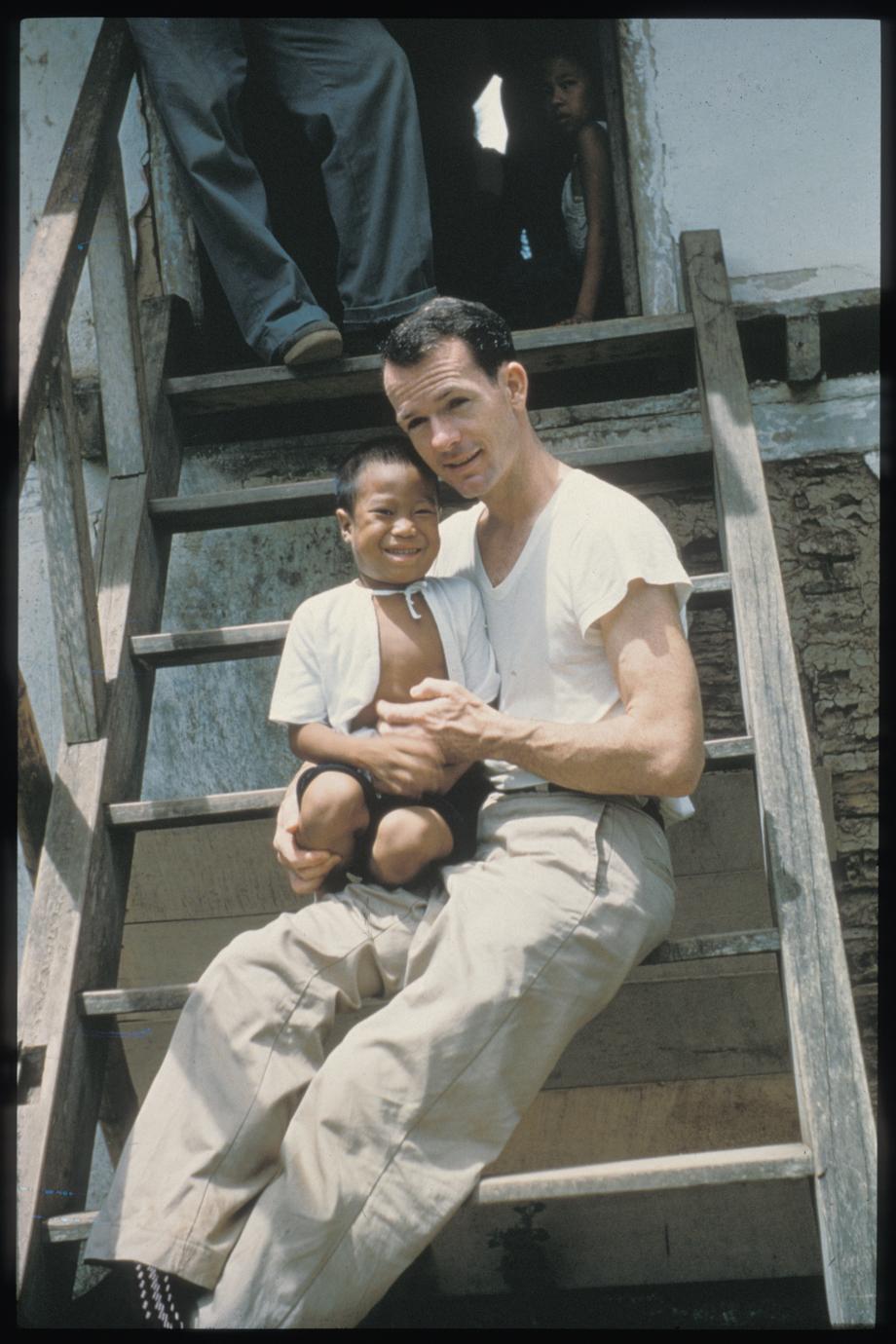
Dr. Howard Levy, a medic, was among the first U.S. soldiers to dissent against the Vietnam War and spent two years in a military jail because he refused to carry out the inoculations in a vaccine program that was used as a cover for clandestine operations designed to gain new military recruits and acquire information on villagers.[14]
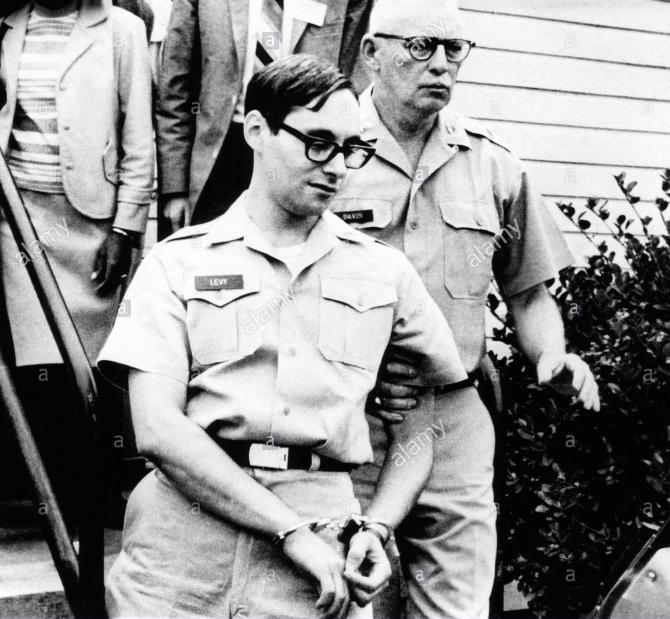
Levy’s story is also not covered in Burns and Novick’s film—nor is the CIA’s manipulation of tribal minorities, notably the Montagnards, who were decimated after being organized by the CIA and U.S. Special Forces into counter-guerrilla militias whose deadly operations extended into Laos and Cambodia.[15]
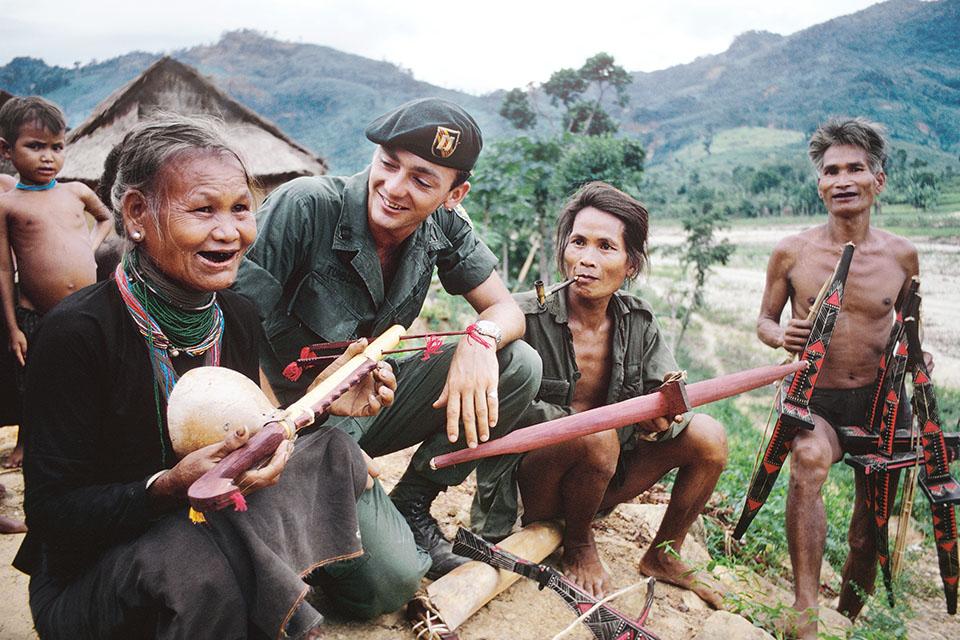
A declassified CIA planning document from September 1963 from the newly released JFK assassination collection significantly highlights the CIA’s “total support for the war against the Vietcong,” including by a) training some 43,000 irregulars; b) supporting the mountain people (Montagnards) in operations against the Vietcong; c) training U. S. Special Forces in South Vietnam; and d) supporting infiltration operations in North Vietnam, which were considered unsuccessful because of “high losses” of the secret teams [the CIA in short was setting up many of its agents to be killed].
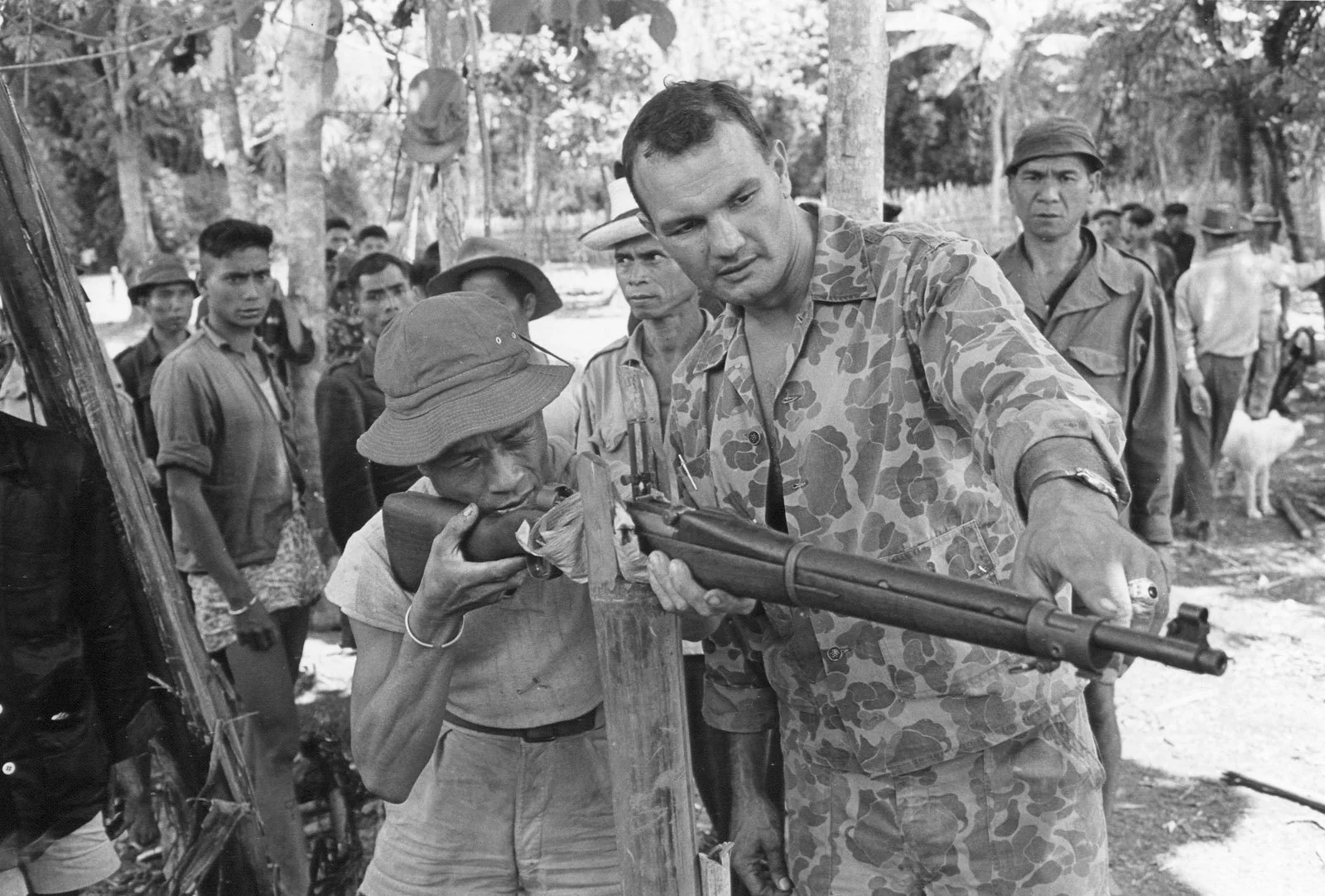
If Burns-Novick wanted to present a historically accurate and critical analysis of the U.S. involvement in Vietnam, they might have interviewed some of the CIA advisers along with the Montagnards whom they worked with and family members of the secret agents who went missing in the North. In addition, they could have interviewed North and South Vietnamese survivors of the war who experienced the terror meted out by CIA trained “irregulars.”
Burns-Novick’s omissions and distortions regarding the CIA in Vietnam are unsurprising given the film’s financial sponsorship by the Ford and Rockefeller Brothers Fund.
The Ford Foundation was established in 1936 by pro-Nazi automaker Henry Ford and evolved during the Cold War into what one analyst termed a “philanthropic façade for the CIA.”
A particular focus was on subverting magazines, scientific programs and non-communist left-wing organizations throughout Western Europe in the 1950s and 1960s in support of U.S. Cold War foreign policies.
The Ford Foundation’s close ties to the CIA were apparent in its naming CIA officer Richard Bissell as its director in 1952, then John J. McCloy, an Assistant Secretary of War and Director of the Rockefeller’s Chase Manhattan Bank, and later Vietnam War architect McGeorge Bundy, who was close with 1950s-era CIA Director Allen Dulles and was the CIA’s man in the Kennedy-Johnson White House.

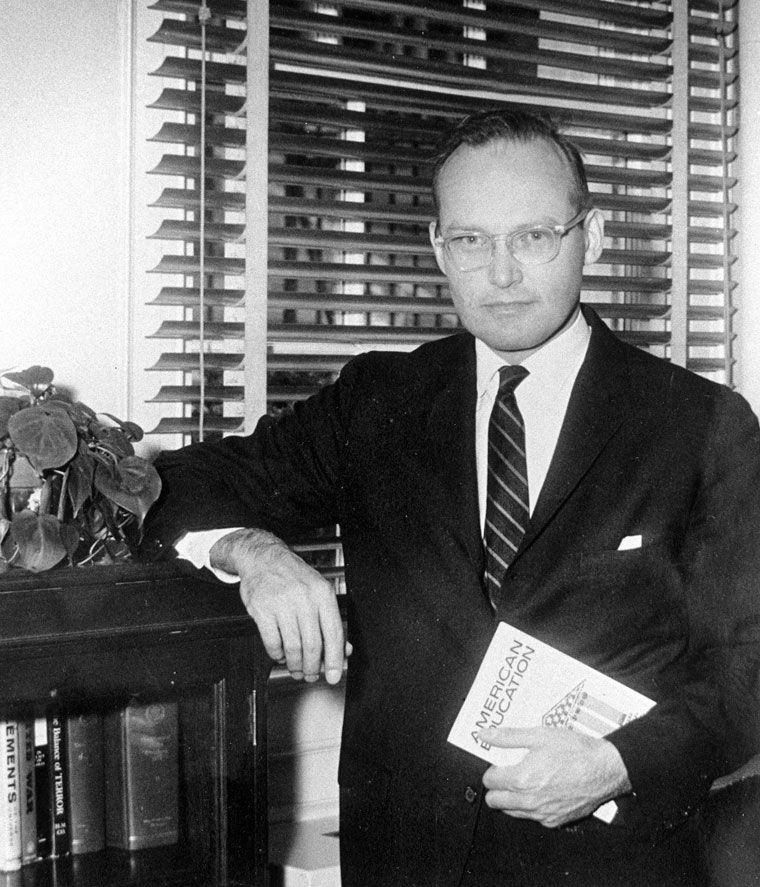
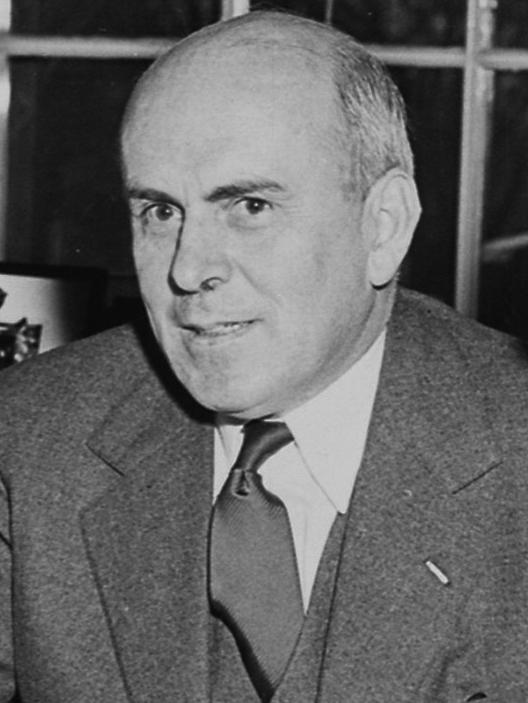
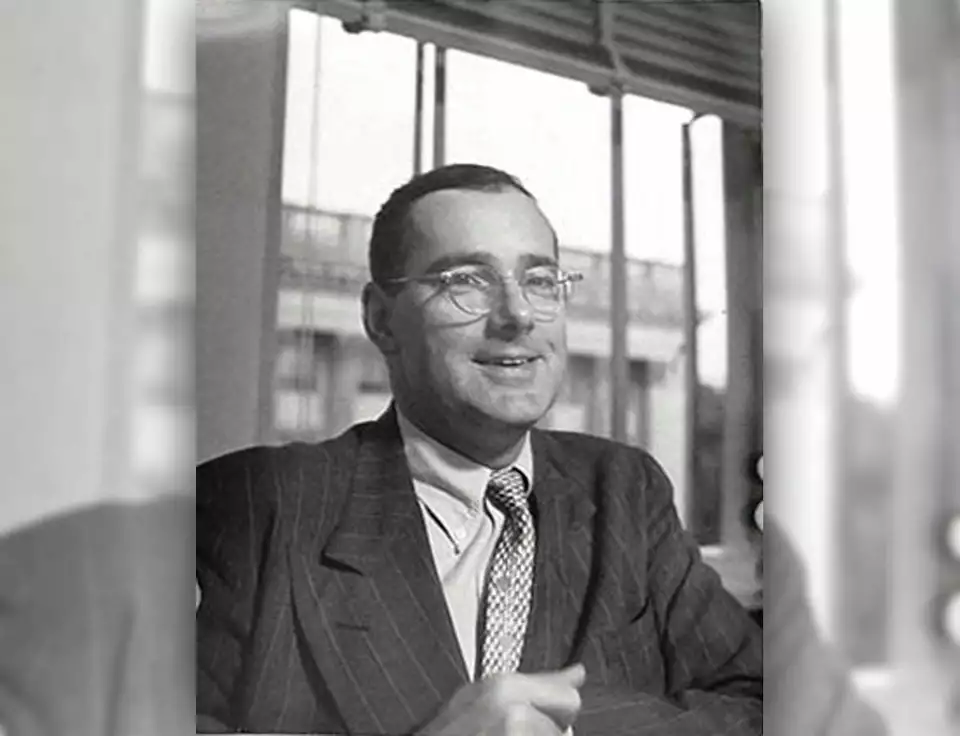
Bissell stated that the purpose of an international publishing house funded by the Ford Foundation in the 1950s was “not so much to defeat the leftist intellectuals in dialectical combat [sic] as to lure them away from their positions.”[16]
Although there are not many real leftist intellectuals left despite the cry you might hear on the right, the Burns-Novick film clearly served to advance Bissell and the Ford Foundation’s mission remnant from the Cold War of trying to undermine or defeat left-wing interpretations that gained currency within the 1960s and 1970s era anti-war movement.
The latter interpretations, which were consistent with the views of the Vietnamese revolutionary movement, emphasized the imperialistic character of U.S. foreign policy building off the precedent of the French and cancerous influence of the CIA in manipulating South Vietnamese politics in a way that provoked a southern guerrilla rebellion by the NLF that prompted U.S. escalation of the war.[17]
The film makes it seem that the southern insurgency was backed by Hanoi as part of its aggressive designs, which anti-war activists and left-wing intellectuals in the 1960s recognized as U.S. government propaganda.
Hanoi could not be the aggressor in its own country as a) most Vietnamese wanted the reunification of their country since there was no historical basis for its division; b) southern leaders could only survive with massive infusions of American military and economic aid; and c) it was admitted by Dwight Eisenhower that, if elections in South Vietnam had been allowed in 1956, North Vietnamese leader Ho Chi Minh would have won with 80% of the vote.[18]
David W. Conde wrote in his 1970 book, CIA: Core of the Cancer, that, “from [Ngo Dinh] Diem to [Nguyen] Van Thieu, all the Vietnamese strongmen were creatures and agents of the CIA.”[19]
This reality is nowhere represented in Burns and Novick’s film, which ignored those latter figures’ involvement in the narcotics trade with the complicity of the CIA—another theme covered in the anti-war literature of the 1960s and early 1970s that the film helps bury down the memory hole.[20]
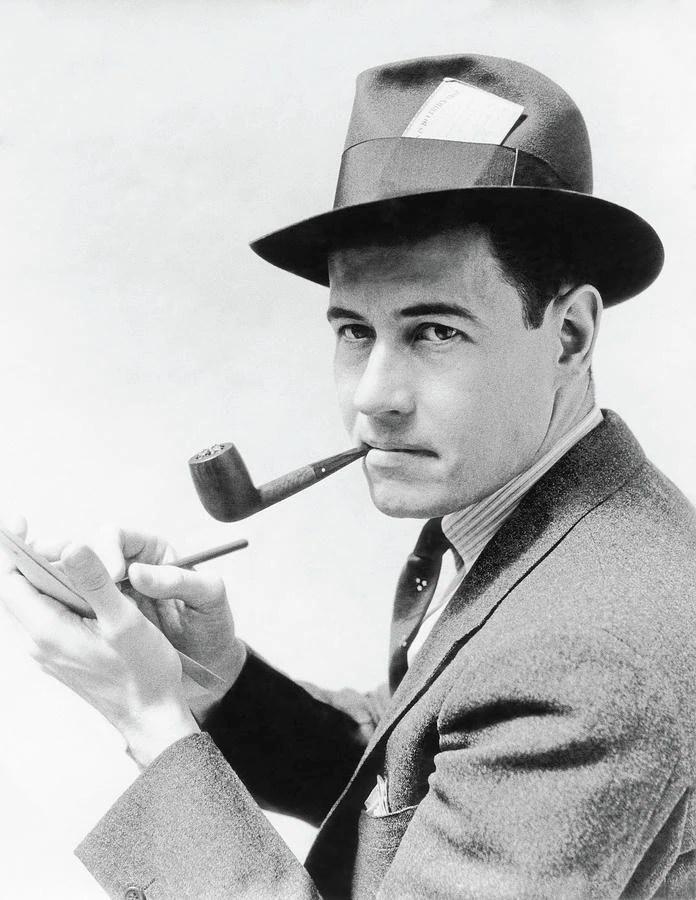
Burns and Novick additionally leave out how the police training program led by CIA advisers working under the cover of Michigan State University (MSU) set the groundwork for the CIA’s Operation Phoenix, which intended to liquidate the NLF through coordinated police-intelligence operations undertaken with South Vietnamese proxies.[21]
After its exposure in the U.S. media, CIA Director William Colby was forced to concede that at least 20,000 people were killed in the Phoenix Program—which targeted civilian officials working in shadow governments that the so-called Vietcong had set up, as well as town mayors and civil servants deemed to be pro-Vietcong.[22]
Burns and Novick cover the Phoenix Program in episode 7, which shows South Vietnamese Provincial Reconnaissance Units (PRU)s administering the water torture to suspects’ identified under Phoenix.
However, Burns-Novick make it seem that the torture of Phoenix suspects resulted from “cowboys” in the PRU—as Phoenix operative Vincent Okamoto calls them—when water torture had been adopted by U.S. troops going back to its colonization of the Philippines at the turn of the 20th century, and when the CIA instructed the PRU and other protégés in torture techniques derived from the CIA’s interrogation manual.[23]
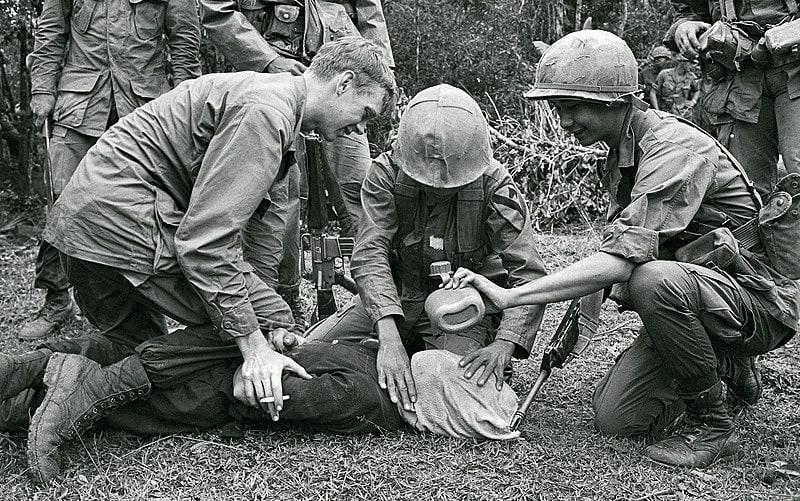
Another thing the film omits is that, because of the mass round-ups under Phoenix, South Vietnamese prisons were grossly overcrowded to the point that inmates had to sleep on top of each other in facilities overrun by vermin and rats and were deprived adequate diets.
Sanitation was abysmal, resulting in disease outbreaks.
When USAID budgeted more money for prison upgrades, much of it was stolen by corrupt ARVN [South Vietnamese army] officials—another fact among many that Burns and Novick leave out.[24]
Burns and Novick claim that, back in the 1950s and early 1960s, the U.S. was deceived by Diem who promoted undemocratic methods against his American benefactors’ advice.
However, MSU police adviser Arthur Brandstatter wrote to his colleague Ralph Turner that he supported Diem’s position regarding the role of the Civil Guard in “neutralizing VC activity” and “never agreed with the position that the Americans should try to help develop a democratic police force under conditions of instability and insurgency.”[25]
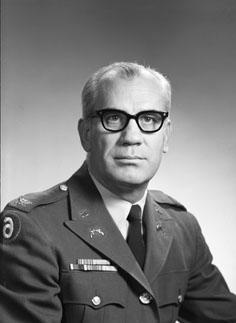
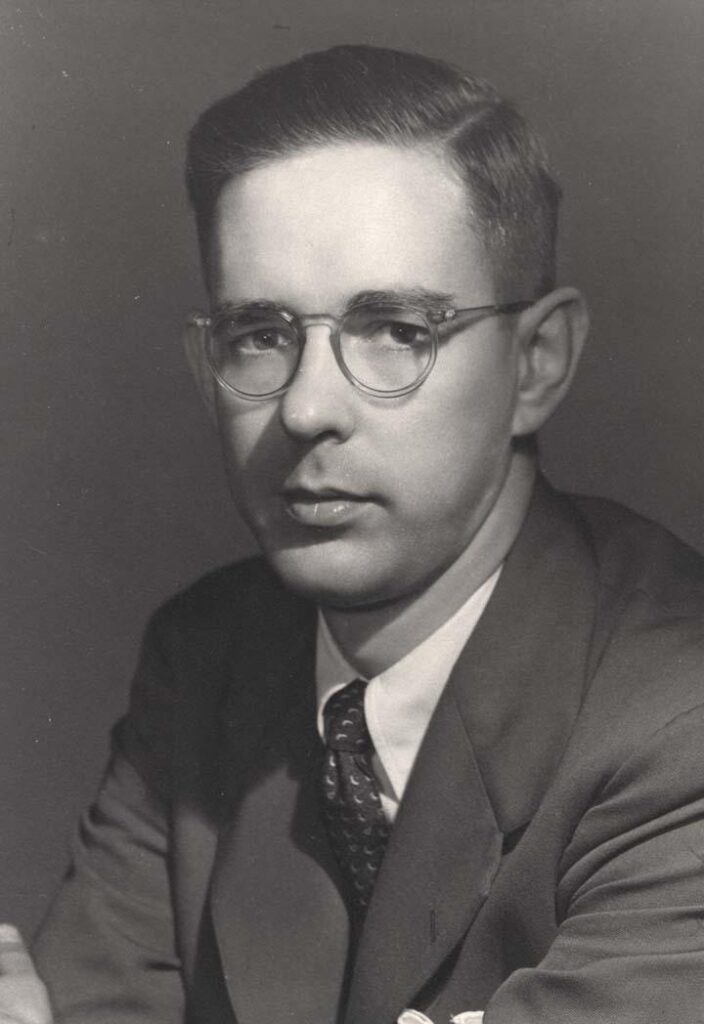
These comments are indicative of the fact that the U.S. purpose in Vietnam never was to spread democracy in South Vietnam, as the film implies.
Rather, it was to establish a U.S. strategic proxy in South Vietnam that would be open to U.S. investors and house U.S. military bases that could be used for an assault on communist China. Another purpose was to connect South Vietnam’s economy with South Korea and Japan, U.S. allies and junior partners in the Cold War, so the latter could be strengthened in an anti-China alliance that served U.S. geostrategic ambitions.[26]
Omitting the CIA’s Role in Deadly Secret Wars
The Burns-Novick film’s omissions regarding the CIA extend to its pivotal involvement in key sideshows of the Indochina War—Laos and Cambodia.
One of the most powerful books written about the war was Fred Branfman’s Voices from the Plain of Jars: Life under an Air War (New York: Harper & Row, 1972), which recorded the drawings of Laos villagers who had to live for years under U.S. bombardment. The book could have been an excellent reference but unfortunately went ignored.
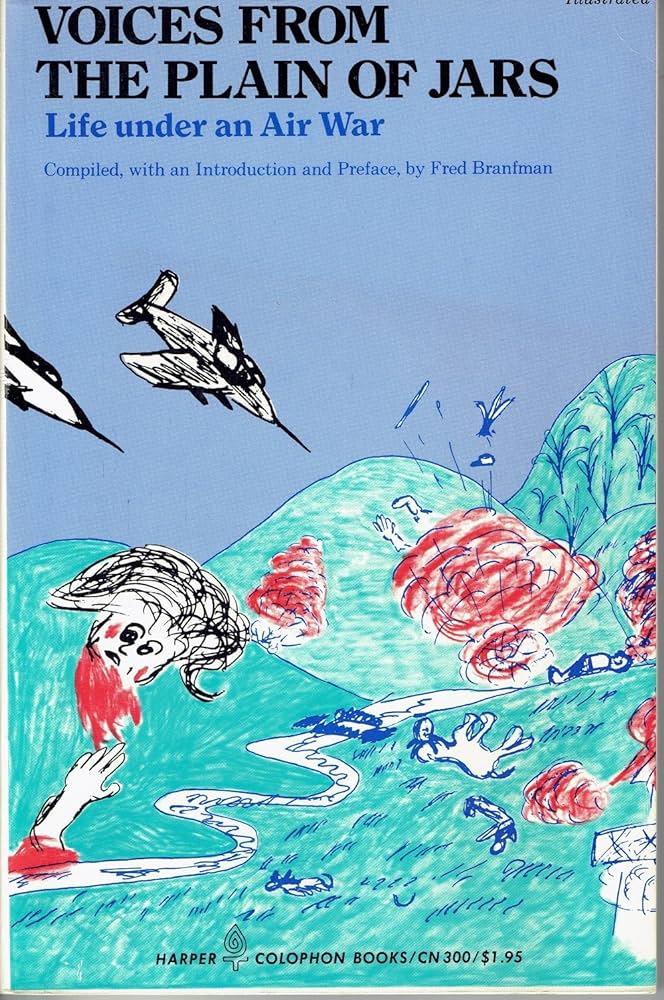
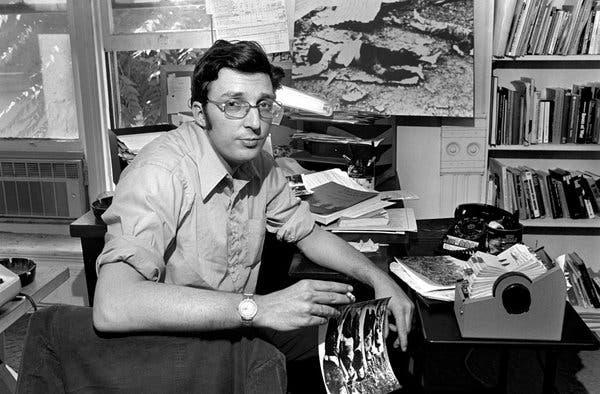
The CIA had coordinated U.S. aid programs in Laos in the 1950s in an attempt to undermine the pro-Communist Pathet Lao, and then sabotaged elections in 1960 that established a coalition government incorporating the Pathet Lao.
The latter were poised to take power because they had led the liberation struggle against France in conjunction with the Vietminh (Vietnamese communists), and promoted land reform, literacy, health care and other programs advocated by the Maoists in China.[27]
In the face of the weakness of its allies and in order to get around the 1962 Geneva Accords prohibiting foreign interference in Laos, the CIA organized a secret army of Hmong tribesmen to fight the Pathet Lao using profits from the opium trade, which the CIA trafficked in through Air America airplanes.[28]
In the 1983 PBS television history of the Vietnam War, CIA Director William Colby praised the Hmong for helping to keep the Pathet Lao at bay for a decade, though inevitably they were defeated and the Hmong people were forced to recruit child soldiers and decimated much like the Montagnards.
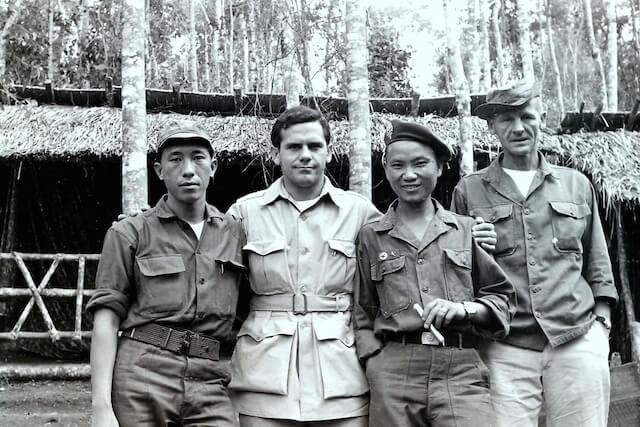
In Cambodia, the CIA financed the opposition and attempted to assassinate Cambodian leader Norodom Sihanouk who promoted a neutralist policy.
The CIA also ran deadly Phoenix-style Special Forces operations into Cambodia accompanied by a massive bombing campaign inaugurated under Lyndon Johnson and expanded under Richard Nixon who gave orders to Henry Kissinger: “anything that flies on anything that moves.”
In 1970, the CIA helped spearhead a coup that resulted in the overthrow of Sihanouk and imposition of a puppet government under Lon Nol that hastened the rise of the left-wing Khmer Rouge who committed genocide when they took power.[29]
Besides supporting the massive U.S. bombing operations, the CIA helped fuel the rise of the Khmer Rouge by training proxy forces that terrorized Cambodian villagers while helping to justify the U.S. involvement by spreading propaganda depicting Cambodia as the headquarters of a major Vietcong base. All this was left out of the Burns-Novick film, which grossly underplayed the horrific human consequences of U.S. intervention in Indochina.
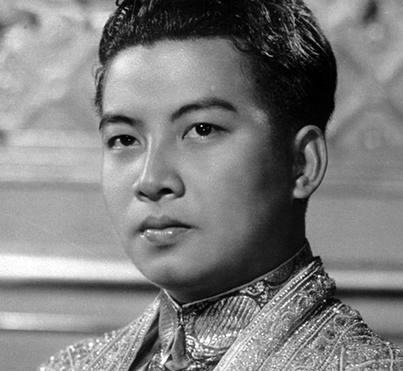
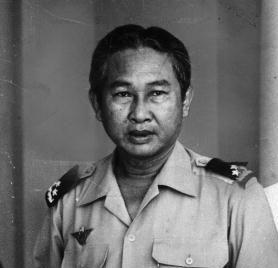
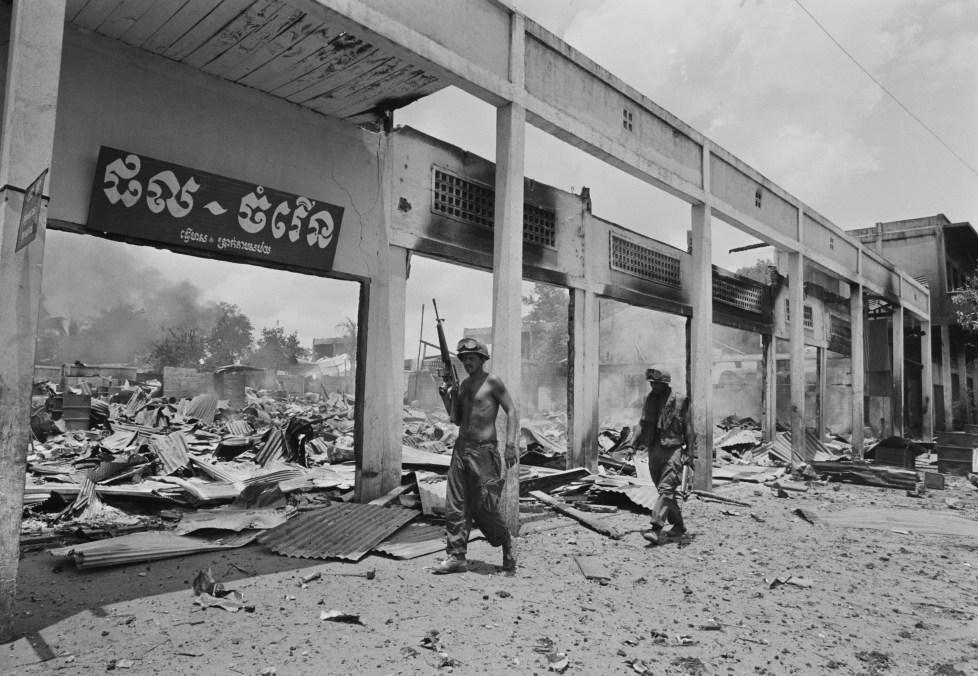
Keeping the Public Misinformed
With the resources at their disposal and Burns’s incredible film-making skills, one can only lament the lost opportunity that The Vietnam Wars documentary represents.
Like other of Burns’s films, The Vietnam Wars is beautiful visually and entertaining to watch, and one can come away from it better informed about the Vietnam War.
The film is successful in its function as a “limited hangout” precisely because it does not come across in any way as crude, nationalistic propaganda.
Some of the lies and missteps of U.S. leaders are acknowledged along with misconduct of U.S. troops, like in the My Lai massacre.
At the same time, however, the film sugarcoats key facets of the history, including pertaining to the CIA, whose consequences should not be underestimated.
Since the Vietnam War ended, the CIA and other U.S. intelligence agencies have become more brazen in intervening in foreign countries and in trying to manipulate U.S. politics.
Part of this manipulation has been an attempt to sanitize the history of the Vietnam War and underplay the extent of U.S. perfidy, which the Burns-Novick film contributes significantly to.[30]
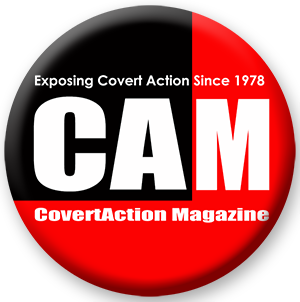
Jennifer Schuessler, “Ken Burns and Lynn Novick Tackle the Vietnam War,” The New York Times, September 1, 2017, https://www.nytimes.com/2017/09/01/arts/television/ken-burns-and-lynn-novick-tackle-the-vietnam-war.html ↑
The Diggers were an anarchist hippie group that set up free medical clinics and Woody Guthrie is an icon of the anti-war and counter-cultural movements whose son Arlo wrote the hippie anthem “Alice’s Restaurant” and starred in a film by the same name. ↑
Schuessler, “Ken Burns and Lynn Novick Tackle the Vietnam War.” ↑
On the Rockefeller’s deep CIA ties, see David W. Conde, CIA: Core of the Cancer (New Delhi: Entente Private Limited, 1970). A review of this difficult-to-find book is found here. On the Ford Foundation’s connection to the CIA, see Paul Labarique, “Ford Foundation, a philanthropic facade for the CIA,” Voltaire Network, https://ia800507.us.archive.org/26/items/CoxCommitteeHearingsOnTheInvestigationOfTaxExemptFoundations1952TranscriptsTaxEx/Ford_Foundation_a_philanthropic_facade_for_the_CIA.pdf ↑
See Seth Jacobs, Cold War Mandarin: Ngo Dinh Diem and the Origins of America’s War in Vietnam, 1950-1963 (New York: Rowman & Littlefield, 2006), 32. ↑
Diem was a Catholic anticommunist whose base was among the Catholic minority of South Vietnam and wealthy classes and others who fled North Vietnam along with anticommunist religious sects like the Cao Dai. David H. Price, Cold War Deceptions: The Asia Foundation and the CIA (Seattle: University of Washington Press, 2025), 183. ↑
See Joseph G. Morgan, Wesley Fishel and Vietnam: A Great and Tragic American Experiment (Lanham, MD: Lexington Books, 2021); Joseph G. Morgan, The Vietnam Lobby: The American Friends of Vietnam, 1955-1975 (Chapel Hill: The University of North Carolina Press, 2009). ↑
Conde, CIA: Core of the Cancer, 138. ↑
Conde, CIA: Core of the Cancer. The cruelty of the Diem regime is also detailed in Wilfred G. Burchett’s book, The Furtive War: The United States in Vietnam and Laos (New York: International Publishers, 1963). ↑
See Jonathan Nashel, Edward Lansdale’s Cold War (Amherst, MA: University of Massachusetts Press, 2005). ↑
CIA Director William Casey said in the 1980s that “we’ll know our disinformation campaign is complete when everything Americans believe is false.” ↑
See Jacobs, Cold War Mandarin; Seymour M. Hersh, The Dark Side of Camelot (Boston: Little, Brown, 1997), 420; Noam Chomsky, At War with Asia: Essays on Indochina (New York: Pantheon, 1970) among other sources. ↑
See James Bradley, “The Cautionary Tale of “Doctor America”: How Dr. Tom Dooley—Once a Universally revered Secular Saint to Millions—Found the CIA and Lost His Halo,” CovertAction Magazine, May 21, 2021.David Zeiger, Sir! No Sir! The Suppressed Story of the GI Movement to End the War in Vietnam (Displaced Films, 2005). ↑
See J. Keith Saliba, “How CIA and Special Forces Tested Counterinsurgency Strategy in Vietnam’s Central Highlands,” HistoryNet, January 8, 2022. ↑
See Jeremy Kuzmarov, “Harvard Kennedy School’s Misinformation Review Promotes Its Own Misinformation,” CovertAction Magazine, September 18, 2023, https://covertactionmagazine.com/2023/09/18/harvard-kennedy-schools-misinformation-review-promotes-its-own-misinformation/ ↑
Noam Chomsky advanced a left-wing interpretation that guided many in the antiwar movement in his trilogy on the Vietnam War: American Power and the New Mandarins; At War With Asia; and For Reasons of State. ↑
See H. Bruce Franklin, Vietnam and Other American Fantasies (Amherst, MA: University of Massachusetts Press, 2000). ↑
See Jeremy Kuzmarov, “Meet a Forgotten CIA Critic Who Presciently Characterized the Agency as a Cancer in 1970 Book,” CovertAction Magazine, April 17, 2023, https://covertactionmagazine.com/2023/04/17/meet-a-forgotten-cia-critic-who-presciently-characterized-the-agency-as-a-cancer-in-1970-book/ ↑
See Alfred W. McCoy, The Politics of Heroin, with Cathleen B. Read and Leonard P. Adams (New York: Harper & Row, 1972). ↑
Jeremy Kuzmarov, Modernizing Repression: Police Training and Nation-Building in the American Century (Amherst, MA: University of Massachusetts Press, 2012), ch. 7. ↑
See Douglas Valentine, The Phoenix Program (New York: William Morrow, 1990). As Valentine shows, Phoenix was also used by unscrupulous people to eliminate personal rivals for power or to strike vengeance against people they had personal vendettas against. ↑
See Alfred W. McCoy, A Question of Torture: CIA Interrogation, from the Cold War to the War on Terror (New York: Metropolitan Books, 2005). On the use of water torture by U.S. troops in the Philippines, see https://peacehistory-usfp.org/1898-1899/ ↑
Kuzmarov, Modernizing Repression, ch. 7. In the Tiger Cages at Con Son, Vietcong prisoners were held underground and urinated on by guards. Many were left paralyzed because their legs were chained to the ground for years on end. Even OPS officials were appalled by the prison conditions in South Vietnam, as bureaucratic reports housed at the National Archives II in College Park, Maryland, reveal.
This history is detailed in Kuzmarov, Modernizing Repression, ch. 7, which draws off USAID records housed at the National Archives. ↑
See Chomsky For Reasons of State; Peter Dale Scott, The War Conspiracy JFK, 9/11 and the Deep Politics of War (New York: Skyhorse, 2013) for insights into the real U.S. motives in intervening in Vietnam. Scott discusses plans for offshore oil drilling off South Vietnam’s coast by U.S. oil corporations, which South Vietnam’s Thieu government was supportive of. South Vietnam also offered a testing ground for U.S. counterinsurgency programs and new weapons systems, and was a major source of profit for military contractors who had been close to war architect Lyndon B. Johnson. ↑
See Nina S. Adams and Alfred W. McCoy, eds., Laos: War and Revolution (New York: Harper & Row, 1970). ↑
McCoy, The Politics of Heroin. The Hmong committed horrific atrocities and provided targets for the secret U.S. bombing of Laos. ↑
See Ben Kiernan, How Pol Pot Came to Power: Colonialism, Nationalism, and Communism in Cambodia, 1930-1975 (New Haven, CT: Yale University Press, 2004). ↑
I would argue that a parallel process has occurred in academia where self-fashioned “revisionist” historians intending to establish Vietnamese agency in the war write U.S. manipulations almost entirely out of the story. These historians have helped address a shortcoming in earlier literatures by giving more weight to Vietnamese sources and perspectives, but often present mainly the viewpoint of supporters of the South Vietnamese regime and go too far in minimizing the importance of covert U.S. intervention in the 1950s and early 1960s which they barely address, if at all. At the same time, they fail to recognize the imperialistic nature of the U.S. intervention in Vietnam, ignoring insights from the antiwar literature of the 1960s and 1970s (which some are dismissive of). Many of these works, in attempting to establish the agency of the South Vietnamese, present the South Vietnamese side in the war in overly positive terms, and go too far in minimizing the fact that the South Vietnamese regime was dependent on U.S. aid and troop deployments for its survival (hence fitting the moniker of a client regime). See as a barometer the collection of essays in the American Historical Review’s 50th anniversary commemoration of the Vietnam War. ↑
CovertAction Magazine is made possible by subscriptions, orders and donations from readers like you.
Blow the Whistle on U.S. Imperialism
Click the whistle and donate
When you donate to CovertAction Magazine, you are supporting investigative journalism. Your contributions go directly to supporting the development, production, editing, and dissemination of the Magazine.
CovertAction Magazine does not receive corporate or government sponsorship. Yet, we hold a steadfast commitment to providing compensation for writers, editorial and technical support. Your support helps facilitate this compensation as well as increase the caliber of this work.
Please make a donation by clicking on the donate logo above and enter the amount and your credit or debit card information.
CovertAction Institute, Inc. (CAI) is a 501(c)(3) non-profit organization and your gift is tax-deductible for federal income purposes. CAI’s tax-exempt ID number is 87-2461683.
We sincerely thank you for your support.
Disclaimer: The contents of this article are the sole responsibility of the author(s). CovertAction Institute, Inc. (CAI), including its Board of Directors (BD), Editorial Board (EB), Advisory Board (AB), staff, volunteers and its projects (including CovertAction Magazine) are not responsible for any inaccurate or incorrect statement in this article. This article also does not necessarily represent the views the BD, the EB, the AB, staff, volunteers, or any members of its projects.
Differing viewpoints: CAM publishes articles with differing viewpoints in an effort to nurture vibrant debate and thoughtful critical analysis. Feel free to comment on the articles in the comment section and/or send your letters to the Editors, which we will publish in the Letters column.
Copyrighted Material: This web site may contain copyrighted material the use of which has not always been specifically authorized by the copyright owner. As a not-for-profit charitable organization incorporated in the State of New York, we are making such material available in an effort to advance the understanding of humanity’s problems and hopefully to help find solutions for those problems. We believe this constitutes a ‘fair use’ of any such copyrighted material as provided for in section 107 of the US Copyright Law. You can read more about ‘fair use’ and US Copyright Law at the Legal Information Institute of Cornell Law School.
Republishing: CovertAction Magazine (CAM) grants permission to cross-post CAM articles on not-for-profit community internet sites as long as the source is acknowledged together with a hyperlink to the original CovertAction Magazine article. Also, kindly let us know at info@CovertActionMagazine.com. For publication of CAM articles in print or other forms including commercial internet sites, contact: info@CovertActionMagazine.com.
By using this site, you agree to these terms above.
About the Author

Jeremy Kuzmarov holds a Ph.D. in American history from Brandeis University and has taught at numerous colleges across the United States. He is regularly sought out as an expert on U.S. history and politics for radio and TV programs and co-hosts a radio show on New York Public Radio and on Progressive Radio News Network called “Uncontrolled Opposition.”
He is Managing Editor of CovertAction Magazine and is the author of six books on U.S. foreign policy, including Obama’s Unending Wars (Clarity Press, 2019), The Russians Are Coming, Again, with John Marciano (Monthly Review Press, 2018), Warmonger. How Clinton’s Malign Foreign Policy Launched the U.S. Trajectory From Bush II to Biden (Clarity Press, 2023); and with Dan Kovalik, Syria: Anatomy of Regime Change (Baraka Books, 2025).
Besides these books, Kuzmarov has published hundreds of articles and contributed to numerous edited volumes, including one in the prestigious Oxford History of Counterinsurgency .
He can be reached at jkuzmarov2@gmail.com and found on substack here.
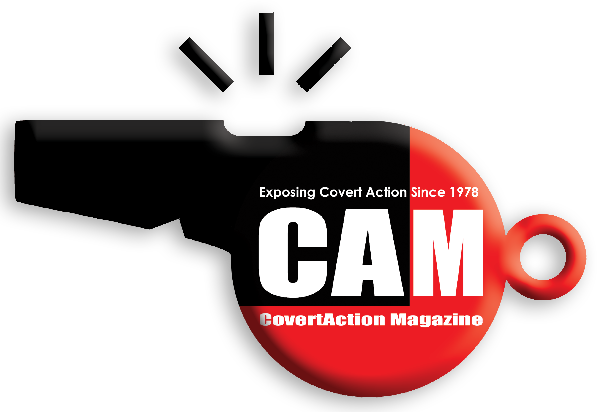
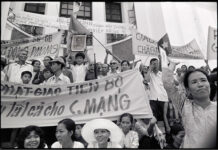
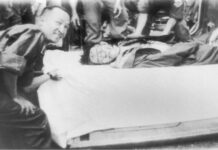

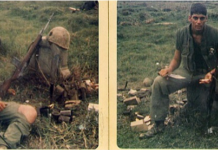
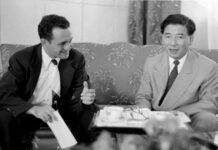
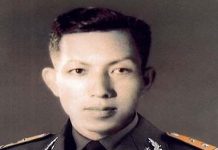
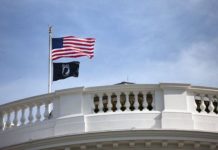

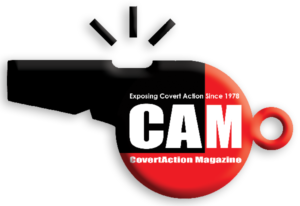
Here is a short video with the truth about the beginning of this war that will never be allowed on corporate funded PBS:
https://youtu.be/0B9BM8OTSB0?t=24